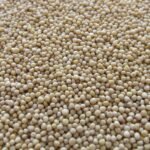Explore the exciting journey of ginger, from its historical origins to its modern culinary and health applications.
From Ancient Medicine Chest to Contemporary Gourmet Kitchens
Behold ginger, the spice that wears many hats! Revered in kitchens for its zesty tang and in traditional medicine for its health perks, ginger has been adding spice to life for centuries. But, have you ever pondered how this knobbly root climbed its way up to culinary and health fame? Well, buckle up because we’re about to embark on a tasty and healthy adventure!
Let’s unravel ginger’s origins, savor its versatile culinary uses, and unearth the myriad of health benefits it harbors within its fibrous structure.
Spicing up History: Ginger’s Ancient Origins
Ginger has been turning heads (and stirring taste buds) for over 5,000 years. Hailing from Southeast Asia, this spicy root was a luxury spice in the Roman Empire, long before it started to jazz up our gingerbread cookies.
Fast forward a few centuries, and ginger is now grown globally, a testament to its popularity and versatility. It’s one root that’s certainly planted itself firmly in our food and health narrative!
Global Ginger: Culinary Uses and Varieties
Ginger wears its culinary versatility badge with pride. Be it the fiery bite of raw ginger in sushi, the comforting warmth in a cup of chai, or the sweet kick in ginger biscuits, this root is the master of culinary disguise.

And it doesn’t stop there. Ginger comes in many forms – fresh, dried, pickled, crystallized, or powdered. There’s even a syrupy version for your cocktails and a candied variety for a sweet treat. Isn’t it amazing how one root can be a jack of all trades in the kitchen?
Nutritional Powerhouse: The Health Benefits of Ginger
Ginger isn’t all taste and no substance. It’s a treasure trove of nutrients and bioactive compounds that bestow a host of health benefits.
Here’s a snapshot of the nutritional value of ginger (per 100g):
| Nutrient | Amount |
|---|---|
| Calories | 80 |
| Protein | 1.82g |
| Fiber | 2g |
| Vitamin C | 5mg |
| Potassium | 415mg |
Frequently Asked Questions about Ginger
Why is Ginger Good for You?
Brimming with antioxidants and anti-inflammatory properties, ginger hailed for its digestive benefits. But that’s not all. Linked to reduced muscle pain, lower blood sugar levels, and even improved brain function.
Can You Eat Ginger Raw?
Sure, you can! Raw ginger has a more potent flavor and offers the highest level of gingerol, the compound responsible for many of its health benefits.
Does Ginger Have Side Effects?
While ginger is generally safe for most people, overconsumption might lead to mild side effects like heartburn, diarrhea, and stomach discomfort.
Final Musings: The Indispensable Role of Ginger in our Palates and Health
The tale of ginger is a riveting story of an unassuming root’s journey to culinary and medicinal fame. Its piquant taste, myriad of uses, and significant health benefits make it a cornerstone in our diets and a stalwart in traditional medicine.
So, the next time you spice up your stir-fry or sip on a ginger-infused tea, take a moment to appreciate this remarkable root. Ginger isn’t just a spice; it’s a potent symbol of our shared gastronomic history and a promise of flavorsome and healthy possibilities.
Fun Facts:
- Ginger is part of the same family as turmeric and cardamom.
- In the Middle Ages, a pound of ginger was equivalent in value to a sheep.
- It’s believed that gingerbread was first invented in Greece over 2400 years ago.
Source: NCBI: Ginger in the Prevention of Nausea and Vomiting




